Plantar Fascitis is one of those incredibly annoying pain issues that crop up in the heel. When you jump out of bed in the morning and feel that sharp, stabbing pain in your heel, you’re probably dealing with plantar fasciitis.
It’s annoying because of its location. After all, it’s not easy to walk without stepping on your heel. Usually, if you take a few more steps, the pain will start to dissipate, disappearing almost entirely as the morning goes by. However, it will be back and waiting for you the next morning.
Fortunately, TENS (transcutaneous electrical nerve stimulation) helps to alleviate plantar fasciitis, especially when used consistently, over time. Plantar fasciitis can rear its ugly head in a number of ways, including the aforementioned, sharp heel pain, swelling and tenderness, and difficulty walking on your heel
If you have the following symptoms due to plantar fascia foot pain:
- Sharp pain in your foot or heal
- Limping, swelling or tenderness in the foot
- Difficulty and experience pain when putting any weight on the foot or heal
Check out where to place a TENS electrode pad to relieve the pain.
TENS Pad Placement for Plantar Fasciitis
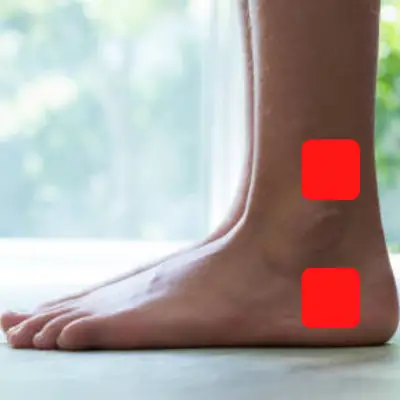
The TENS device will definitely do its job but it’s limited by where you place the pads. If you place them in the wrong spot, it’s not the fault of the device. To promote the best effects TENS devices have to offer, you need to know where to place the pads to treat yourself.
Where you palace the pads is wholly dependent on how severe the plantar fasciitis is and where the pain is located. It might be just in the bottom or back of your heel. But it can also extend all the way down the arch to the tips of your toes.
The best way to deal with it is to place the pads where the pain is the worst. Start by thoroughly cleaning your feet, drying them, and getting them nice and warm. This will help facilitate positive blood flow and allow the pads to stick better.
It’s also important to leave 1” to 2” between the two pads. There are a number of places you can place the pads, again, based on where the pain is. If it is in the entire heel, place one pad just below the ball of your ankle and one pad on the very bottom of your heel.
You can also place both pads on the bottom of your foot. Try one on the bottom of your heel and one about 2” forward, on the bottom of your foot’s arch. You can place one just above your ankle and one just below as well.
You can even place one pad on the bottom of one foot and one pad on the bottom of the other foot.
TENS unit placement is not an exact science. You can experiment with the placement of the pads along the back of the leg and heel. This will help in getting the maximum pain relief.
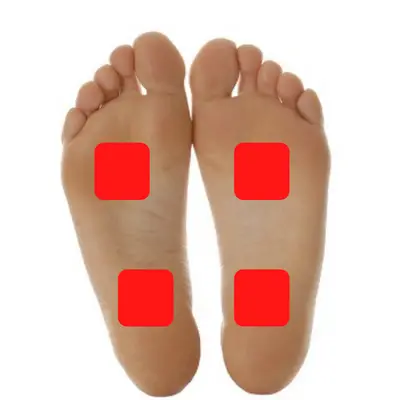
Last tip on the TENS electrode placement- Try to have space between the electrode pads. One inch is ideal if possible.
I have found that this placement works best at delivering pain relief. By concentrating the electrode pads directly on the plantar fascia it has worked wonders and greatly reduced foot pain.
How High Should I Set My TENS Unit? click here to read what settings to use.
Closely Follow the Instructions
Some TENS units come with only a few settings and others come with a lot more. The TENS devices that have a wide range of settings generally mean you have a broadened degree of control over how intense you want the settings to be.
For chronic and ongoing pain, you should keep your treatment settings somewhere between 2 Hz and 10 Hz. That doesn’t sound like much but it’s great for multiple, small treatments throughout the day when you’re dealing with ongoing, long-term plantar fasciitis.
To deal with moderate pain, set the frequency between 35 Hz and 50 Hz. Acute, high levels of pain may require you to go as high as 80 Hz to 120 Hz. Of course, you have to be careful when adjusting to very high settings.
You’re dealing with very high current, after all, and a TENS device is more than capable of doing the exact opposite of relieving pain. It can even burn the skin if you set it too high. The best method is the experimental one. Adjust the Hz between the settings for the kind of pain you’re dealing with.
Only make small adjustments at a time and allow some time on a single setting to see how your feet feel before you adjust the frequency even higher. The idea is to relieve pain, not create more pain and problems for yourself.
Why Should You Trust Me?

I have extensively used TENS units for neck, shoulder, back and heel pain. I’m certified by Relias Academy in TENS, interferential electrical stimulation, and neuromuscular electrical stimulation (NMES). With over 10 years of TENS unit therapy experience, I feel confident that my recommendations can help you lessen the aches and pains of everyday life.
What Causes Plantar Fasciitis?
For starters, it’s the most common cause of foot pain, so don’t think you’re alone in having to deal with it. Odds are, several people you know probably deal with it as well. Because of where the pain is often located (in the heel), it’s easy to believe that the pain is superficial.
However, Plantar Fasciitis is actually caused by straining the plantar fascia ligament, which is apparently pretty easy to do, especially as you grow older. There are a number of causes that can ignite plantar fasciitis and it doesn’t matter if you lead an active or sedentary lifestyle.
What matters is straining the ligament that runs through your heel and the arch of your foot. You can do this in more ways than we can probably put down on paper.
- Overweight
- Excessive running or jogging
- Pregnancy
- You spend a lot of time standing throughout the day
- You have a tendency to walk on the inside of your foot
- High arches
- Flat feet
- Your shoes don’t fit very well
- Between the ages of 40 and 60 (plantar fasciitis shows up in this age group more than any other)
- Jumping down from a moderate height
This is just a limited list because it doesn’t take much to strain that ligament. Something as simple as an abrupt turn in poorly fitting shoes is enough to place too much strain on the ligament and cause plantar fasciitis.
Symptoms of Plantar Fasciitis
You would think that pulling a ligament or even slightly straining it would cause sharp pains and not much else. Most of the time, when you strain a ligament, it’s very sore and you’ll experience sharp pain when exerting any kind of force on that ligament before it healed.
However, plantar fasciitis is a little different because it can exhibit pain in a variety of ways, most of which are more frustrating than completely debilitating.
- Burning pain that might be in the heel only or spread from the heel to the arch of the foot
- Swelling, mostly in the area where the strain occurred
- Tingling (kind of like your foot falling asleep but worse
- Radiating pain (nerves are finicky and pain in one spot can trigger radiating pain or phantom pains throughout the foot)
- Numbness (again, kind of like your foot falling asleep but it doesn’t dissipate over time)
It might not end there either, especially if you continue to put a lot of exertion on the foot without treating it. If you ignore plantar fasciitis and go on your morning run or otherwise exert a lot of pressure on the strained ligament, you may have to deal with something worse—rupturing.
Rupturing doesn’t mean your foot will explode or anything crazy like that, but it is a worse form of plantar fasciitis. The pain will go from throbbing to sharp and cute, with swelling and possibly clicking sounds that emanate from your foot when you walk.
How Does TENS Work?
Since TENS is an excellent way to deal with plantar fasciitis and bring you some relief, it’s worth covering what TENS is or, more specifically, how it works. TENS isn’t some weird, made-for-TV mechanism, and it’s certainly not a DIY exercise/stretching routine.
TENS is a technological thing that is squarely planted in the therapeutical side of medicine. Just like people recovering from serious injuries go to physical therapy appointments, TENS brings those appointments straight to your home.
TENs aren’t designed to heal. However, it facilitates healing by blocking pain receptors in the brain, increases blood flow, and causes the brain to release endorphins. Blood flow is huge when it comes to rapid healing.
Blood is the natural transportation highway of the body, delivering everything the damaged ligament needs to properly repair itself. TENS is a small device with wires that run from the device to small pads you place on your skin, usually over the damaged area.
The device sends tiny, electrical impulses through the wires, which are delivered to the leads which are connected to the pad. The electrical signals are then dispersed into the muscle tissue along the area that’s covered with the pad. It’s really that simple and, the best part is, it works very well.
Can you put a TENS unit on the bottom of your feet?
The answer is a definite YES. This is probably one of the more painful foot pains that there is, especially heel pain.
You can do exercises that will assist and with the addition of a TENS unit it will help ease the pain from plantar fasciitis. Chiropractors regularly incorporate the use of TENS therapy to help give their patients relief and YOU can take advantage of this type of therapy.
Click here to learn where to place a TENS unit for Foot Neuropathy
Effectiveness of TENS Therapy for Plantar Fasciitis
There was a study completed back in 2009 that looked at using low frequency electrical stimulation as a treatment for plantar fasciitis heel pain. They had 2 groups:
- Control group was only treated with stretching exercises and orthotic braces
- Treatment group was treated with TENS therapy along with stretching exercises and orthotic braces.
The results of this study showed that both control groups experienced a decrease in pain but one thing did stand out. The group that used TENS therapy reported feeling a decrease in pain by 35% as opposed to 23.9% for the control group.
Check out the study here
Here is another study on the effectiveness of TENS therapy
What to look for in a TENS Unit?
The great thing about tens therapy units are when used correctly there are no long term harmful side effects unlike many over the counter and prescribed medications for pain.
When you buy a TENS unit you should read the instructions on what not to do with them but since you are still reading this article I will give you the cliff notes version.
Do Not Use a TENS Unit…
- If you have a pacemaker or a heart rhythm problem
- If you have epilepsy
- Do not use near heart monitors or alarms
- If you have acute or infectious diseases
Do Not Place a TENS Unit…..
- Over your eyes
- Across the front part of your head
- On the abdomen, if you are pregnant
- Near any malignant tumors
- On the carotid arteries in the front of your neck
To read about the Best TENS Units for Foot Pain click here.
Some things to keep in mind when using a TENS unit on your skin
- Always wash the area of the skin where the electrode pads will be put. Make sure the area is dry to ensure the pads will adhere to the skin.
- You do not have to shave hair in the area where the pads will be used. If there is excess hair you can just use some scissors.
- When you are done with the TENS treatment, remember to pull in the direction of hair growth
- If you have irritated or broken skin or even an open wound, it is wise to NEVER apply the electrode pads until the area has fully healed.
- When you are done using your TENS unit put the electrode pads back onto the plastic square- This will ensure that the pads stay sticky and can be reused multiple times.
TENS Therapy Works
As we explained above, TENS therapy improves blood flow, increases the release of endorphins, and reduces pain. Over time, those three things facilitate faster healing. Depending on how badly you strained your plantar fascia ligament, it could take several TENS sessions to help you heal.
So long as you follow the instructions and find the settings that are right for you, you’ll notice the difference in how your heel and arch feel, especially in the mornings when you first get out of bed. The session itself is comfortable, with nothing more than a moderate tingling, massage sensation as you go.
All Things Considered
TENS therapy is an excellent option for dealing with plantar fasciitis. It’s fairly simple to use and a more affordable option than spending thousands on physical therapy appointments at your local medical facility. The placement of TENS device pads is pretty easy as well, with a primary focus on the areas that experience the most pain.
Thank you for reading
References
https://www.mayoclinic.org/diseases-conditions/plantar-fasciitis/symptoms-causes/syc-20354846
TENS Therapy for Feet: Drug-Free Plantar Fasciitis Relief
Retrieved from: https://ireliev.com/tens-therapy-for-feet-drug-free-plantar-fasciitis-relief/
What is plantar fasciitis and how do I know if I have it?
Retrieved from: https://www.healthpartners.com/blog/plantar-fasciitis-symptoms-causes-and-more/

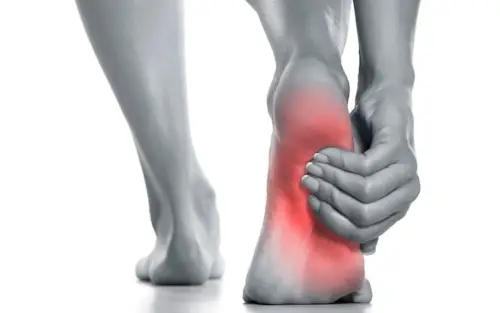
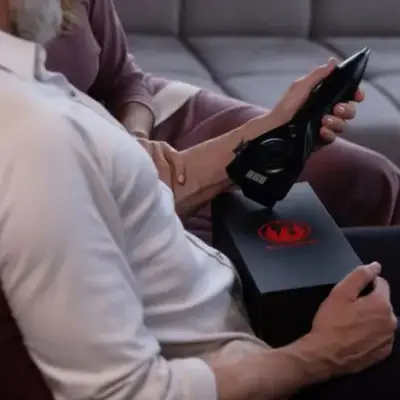

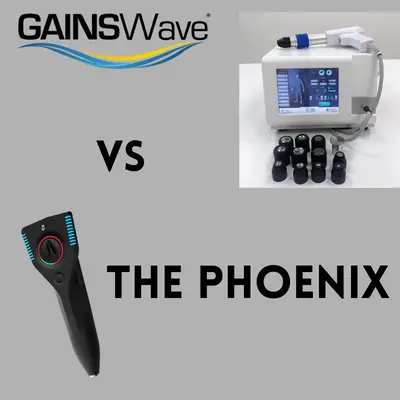
13 responses to “Use This TENS Placement For Plantar Fasciitis”
The device you are referring to as a TENS unit, on Amazon, is an EMS (electronic muscle stimulator). TENS and EMS are very different.
Hi Gwen,
The device I recommend is a combination of TENS and EMS device made by TechCare.
John
Optimize Health 365
I was wondering which settings would one use for plantar fasciitis as i have twenty four on my tens unit.
Hi Matt,
It’s personal preference. I prefer the scraping mode as it helps in increasing blood flow along with reducing inflammation. It’s difficult to pin point which setting is best as we all react differently to TENS treatments. My advice is to test them all out and see which is best for treating your specific pain.
[…] This is The Correct TENS Unit Placement for Plantar Fasciitis […]
[…] This is The Correct TENS Unit Placement for Plantar Fasciitis […]
[…] The Correct TENS Unit Placement for Plantar Fasciitis […]
[…] Plantar Fasctiitis […]
[…] from Plantar Fasciitis? Click here to get relief from this painful […]
[…] to a percussion massager for alleviating plantar fasciitis is a TENS unit. Check out my article here how a TENS unit can provide quick pain […]
[…] Plantar Fasciitis […]
[…] Plantar Fasciitis […]
[…] you are considering using a TENS unit to treat your foot neuropathy, be sure to talk to your doctor first to make sure it is an […]